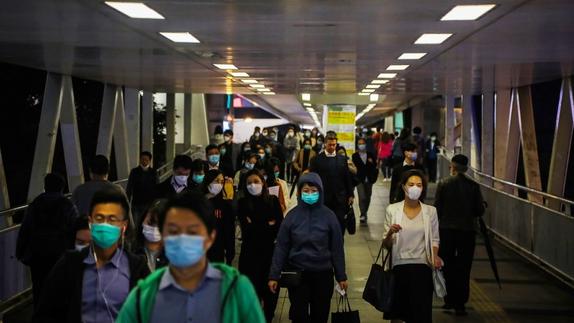 People wearing face masks walk on a footbridge during the evening rush hour in Hong Kong on March 4, 2020.
(VIVEK PRAKASH / AFP)
People wearing face masks walk on a footbridge during the evening rush hour in Hong Kong on March 4, 2020.
(VIVEK PRAKASH / AFP)
HONG KONG - Hong Kong recorded 48 infections of the novel coronavirus on Friday, setting a record of new cases confirmed in a single day. The previous record was set on Wednesday when 25 cases were reported.
The latest infections brought Hong Kong’s tally to 256 on Friday.
All but one new patients, aged between four and 69, are Hong Kong identity card holders. Among them, 36 had traveled overseas
ALSO READ: HK sees highest single-day spike in cases
Head of the Communicable Disease Branch of the Centre for Health Protection of the Department of Health, Chuang Shuk-kwan, expected the number of infections to remain high in the coming two weeks as more people return to Hong Kong from overseas.
All but one new patients, aged between four and 69, are Hong Kong identity card holders. Among them, 35 had traveled overseas during the incubation period.
Among the remaining who did not have travel history during incubation period, some are close contacts of confirmed patients. One of them is a taxi driver who claimed to have picked up passengers at the airport. The driver told the authority that he was wearing a mask during the trip.
READ MORE: HK imported cases rise amid tight border control
Among the 48 newly cases, eight were students returning from overseas, including four from the UK, one from Canada and one from the US.
Twenty-eight arrivals were sent directly from the airport to public hospitals on Thursday, while another 23 were sent to hospitals from quarantine centers or home quarantine.
The youngest new patient is a four-year-old girl whose father is believed to have contracted the disease during a trip to London.
The Hospital Authority said it planned to upgrade 400 beds for isolation use by the end of March, adding that it may have to cut more non-emergency services to deal with the surging number of infections.


